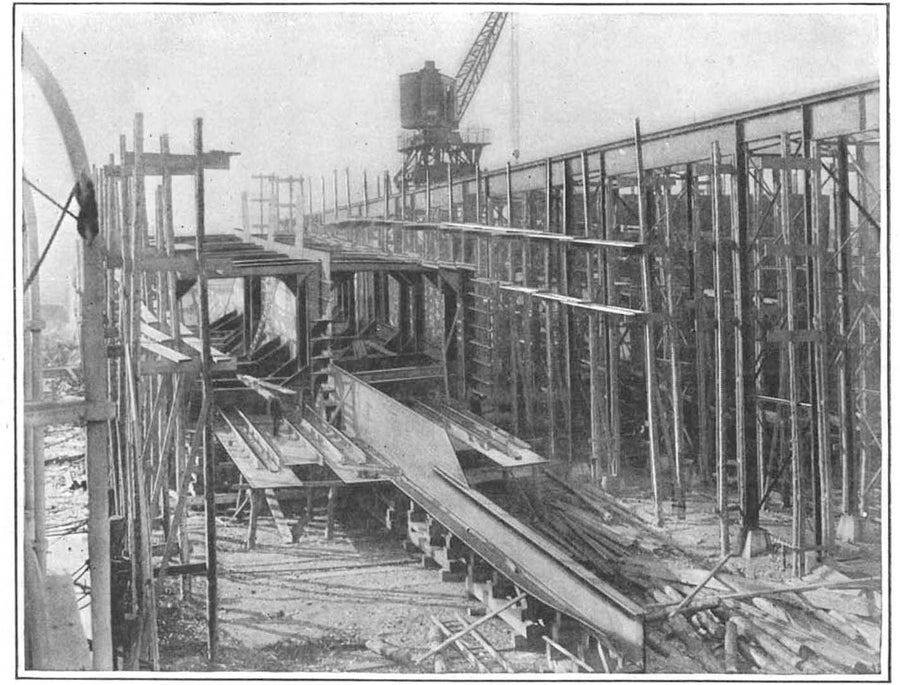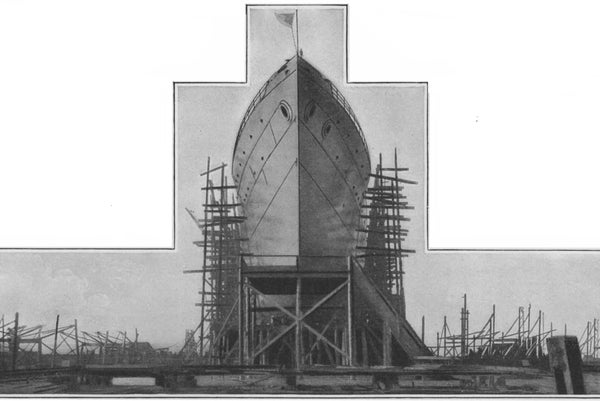This article was published in Scientific American’s former blog network and reflects the views of the author, not necessarily those of Scientific American
If naval battles in the First World War were few and far between, shipbuilding, naval blockade and submarine warfare were far more important in determining victory and defeat.
At the start of the war, the British Royal Navy began enforcing a strict blockade of Germany and the Central Powers. Legally, the U.S. and other neutral countries could trade with anyone, but in practice their considerable resources were at the disposal of Britain, France, Russia, Italy and the rest of the Entente, much to the detriment of Germany and the Central Powers.
Germany attempted early on to impose a blockade of its own by using submarines and mines to attack surface ships of its enemies and of any neutral country sending military supplies to its enemies. German analysis had predicted that by destroying some ships and keeping the rest in port through fear, Britain would inevitably starve and would be forced out of the war. In 1916, 2.3 million tons of Entente and neutral shipping had been sunk, and only 1.7 million tons of shipping had been built. In 1917 it seemed that unrestricted submarine warfare might succeed: 6 million tons of Allied shipping were sunk, but only 2.9 million were built.
On supporting science journalism
If you're enjoying this article, consider supporting our award-winning journalism by subscribing. By purchasing a subscription you are helping to ensure the future of impactful stories about the discoveries and ideas shaping our world today.

U.S. shipyards produced staggering quantities of merchant shipping. The cargo these ships carried not only included soldiers and their weapons, but also food and supplies for nations to continue their war effort.
Credit: Scientific American, May 27, 1916
As awful as these casualties were for merchant shipping, the fraction of ships sunk remained low: by the end of the war, the Allies still had about 35 million tons of merchant shipping available to continue bringing food, raw materials and military supplies to Britain, France, Italy and Russia. (The “Entente” was called the “Allies” after the entry of the U.S. into the war).
Yet shipbuilding in the U.S. in 1916 doesn’t seem to have been about the strategic considerations of shipping and national survival. It was about opportunity and profit. An article on the resurgent business of building ships crowed:
It is probably safe to say that there is not now one plant in the United States, equipped for modern work, which does not have its docks, as well as books, quite comfortably full of a new sort of business.
A man prominent in shipbuilding said not long since that his business, and that of practically all others, was no longer a question of costs and prices, but of deliveries. ‘If we can get the steel, our plants will operate twenty hours a day for more than a year on orders already placed’; and it is all building. Practically no repair work is being handled now, for under present industrial and economic conditions there is relatively no profit in it. Ships being built for the Transatlantic trade are ranging in price from $500,000 to $1,250,000, [about 12 to 28 million dollars in 2015 currency] and most of them are paying for themselves within a year.’ Owners cannot afford the delays repairs entail, nor builders afford to make them with their prices for gross tons rising from $60 to $95 in much less than one year. So that the present loss from neglected and postponed repairs and overworked ships is adding to their usual depreciation, only contributing to the enormous demand for other and newer ones.
So desperate was the need for ships that wood began to appear again in the construction of large ships.
By 1918, however, the prospects had changed. The entry of the U.S. into the war gave a titanic boost to factory production. Defenses against U-boats were becoming more robust: the convoy system was one of the most effective ways of thwarting an attack. In that year 2.5 million tons of Allied and neutral shipping were sunk, and factories in the U.S. and elsewhere churned out 5.4 million tons to replace it. Those new ships brought supplies and soldiers, by the thousand, then by the million, to the battlefields.
-
Our full archive of the war, called Scientific American Chronicles: World War I, has many articles from 1914–1918 on economic aspects of the First World War. It is available for purchase at www.scientificamerican.com/products/world-war-i/
